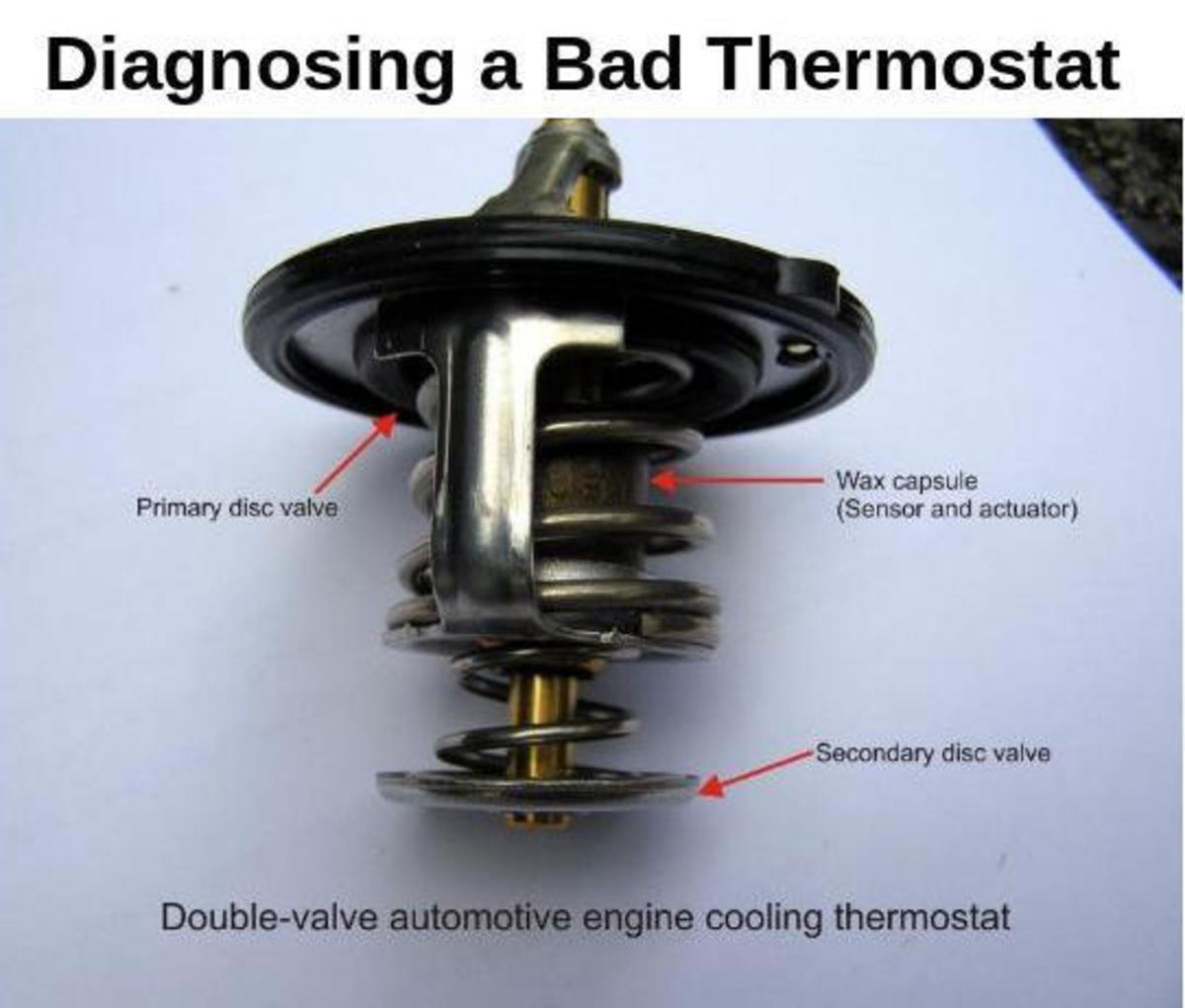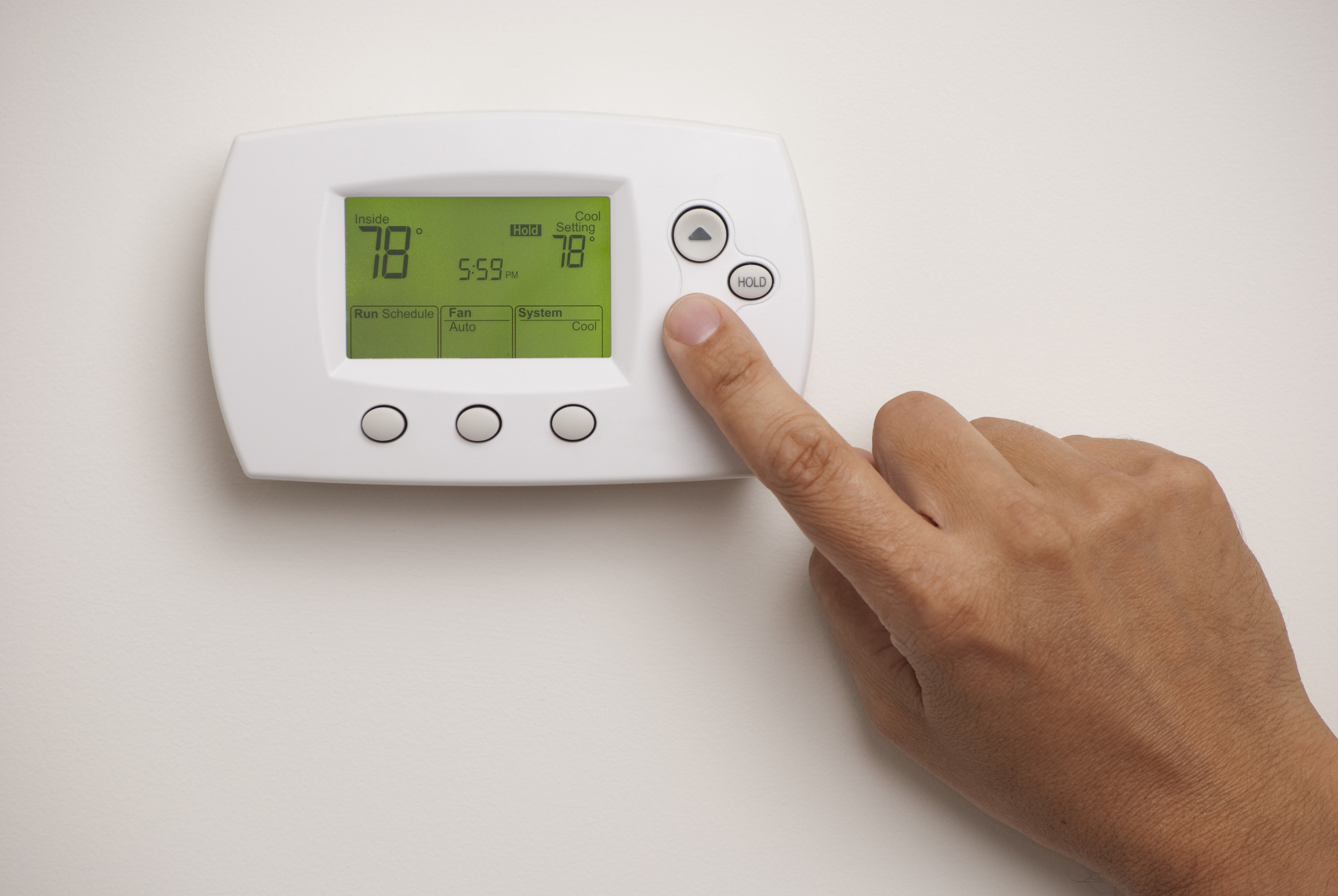Check Best Thermostat Pricing in Amazon
** As an Amazon Associate, I earn from qualifying purchases.
Is your home feeling too hot or too cold, even when the heater or air conditioner is running? You might have a bad thermostat.
Knowing when your thermostat is failing can save you from uncomfortable days and high energy bills. You’ll learn the simple signs to watch for and how to tell if your thermostat needs fixing or replacing. Keep reading to avoid costly mistakes and keep your home comfortable all year round.
Signs Of A Faulty Thermostat
Thermostats control the temperature in homes and offices. A bad thermostat causes discomfort and higher energy bills. Spotting early signs helps fix problems quickly. Here are common signs that show a thermostat may be faulty.
Inconsistent Temperature
The room feels too hot or too cold without any change in settings. Temperature swings happen often and quickly. This means the thermostat is not reading or controlling the heat properly. Your space will never stay at a steady, comfortable temperature.
Unresponsive Controls
Changing the temperature does not affect the heating or cooling system. The thermostat buttons or screen might not work at all. Sometimes, the display goes blank or freezes. This shows the thermostat is failing to communicate with your system.
Short Cycling
The heating or cooling system turns on and off very fast. This starts the system repeatedly in a short time. Short cycling stresses the HVAC system and wastes energy. A bad thermostat often causes this issue by sending wrong signals.
System Not Turning On Or Off
The heating or cooling system does not start or stop as expected. Your system keeps running endlessly or does not start at all. This means the thermostat is not sending the right commands. It cannot control your HVAC system properly.
Common Thermostat Problems
Thermostats control your home’s heating and cooling. Problems with them can cause discomfort and higher energy bills. Recognizing common issues helps you fix them early. Here are some frequent thermostat problems to watch for.
Wiring Issues
Loose or damaged wires stop the thermostat from working properly. This can cause the system to turn on and off randomly. Check for visible wire damage or loose connections. Faulty wiring often leads to no response from the thermostat.
Sensor Malfunctions
The thermostat sensor measures room temperature. If it breaks or gets dirty, it sends wrong signals. This causes the system to run too long or not enough. A bad sensor can make your home too hot or cold.
Battery Failures
Many thermostats use batteries to function. Dead batteries cause the thermostat to lose power. This leads to blank screens or no response. Replace batteries regularly to keep the thermostat working well.
Calibration Errors
Calibration means the thermostat’s temperature reading matches the room’s actual temperature. If it is off, the system heats or cools incorrectly. You may feel uncomfortable even if the thermostat shows the right number. Calibrate your thermostat to fix this issue.
Testing Your Thermostat
Testing your thermostat helps find out if it works right. It shows if your heating or cooling system will respond well. Simple steps can check the main parts of your thermostat. These checks save time and avoid costly repairs.
Checking The Display And Settings
Look at the thermostat screen. It should be clear and bright. Check if the temperature shows correctly. Make sure the settings match what you want. Wrong settings can make the room too hot or cold.
Using A Multimeter
A multimeter measures electric signals in the thermostat. Turn off the power first to be safe. Connect the multimeter to the thermostat wires. Check for voltage and continuity to see if parts work. No reading means a possible fault.
Resetting The Thermostat
Resetting can fix small errors in the thermostat. Find the reset button or remove the batteries. Wait a few minutes and turn it back on. This clears glitches and refreshes the system. Many problems disappear with a reset.
Comparing Room Temperature
Use a separate thermometer in the room. Compare its reading with the thermostat’s display. A big difference means the thermostat may be wrong. Check several spots to be sure. This test shows if the thermostat senses temperature well.

Credit: discover.hubpages.com
When To Replace Your Thermostat
Knowing when to replace your thermostat can save you money and improve home comfort. A thermostat controls your heating and cooling system. If it fails, your home may not stay at the right temperature. Watch for signs that your thermostat is no longer working well. This guide helps you understand when to replace it.
Check Best Thermostat Pricing in Amazon
** As an Amazon Associate, I earn from qualifying purchases.
Age And Wear
Thermostats usually last about 10 years. Over time, parts wear out and performance drops. An old thermostat may not read temperatures correctly. Dust and dirt can build up inside. If your thermostat is old, replacement is a smart choice.
Frequent Repairs
Constant repairs cost more than a new thermostat. If you fix it often, it may break again soon. A thermostat that stops working regularly disrupts your comfort. Replacing it can stop these problems and save money.
Compatibility With Hvac System
Newer HVAC systems need modern thermostats. Older models might not match well with your system. An incompatible thermostat may cause poor heating or cooling. Check if your thermostat fits your system. If it does not, replace it for better efficiency.
Benefits Of Upgrading To Smart Thermostats
Smart thermostats offer more control and save energy. You can adjust settings from your phone. They learn your schedule and adjust temperatures automatically. Upgrading can lower energy bills and improve comfort. Smart thermostats are easy to use and reliable.
Preventing Thermostat Issues
Preventing thermostat issues helps keep your heating and cooling running smoothly. Taking simple steps can stop problems before they start. A well-maintained thermostat saves money and avoids discomfort in your home.
Regular Maintenance
Clean the thermostat regularly to remove dust and dirt. Dust can block sensors and cause wrong temperature readings. Check the batteries often and replace them when needed. Regular maintenance keeps the thermostat working well over time.
Proper Installation
Install the thermostat away from direct sunlight and drafts. Avoid placing it near windows, doors, or heat sources. Proper placement helps the thermostat read the room temperature correctly. Follow the manufacturer’s instructions for the best setup.
Avoiding Extreme Conditions
Protect the thermostat from extreme heat or cold. Avoid placing it in garages, attics, or unheated rooms. Extreme conditions can damage the thermostat’s components. Keeping it in a stable environment extends its life.
Monitoring System Performance
Watch how your heating and cooling respond to thermostat settings. Notice if the system runs too long or too short. Early signs of trouble help catch problems fast. Regular checks ensure your thermostat controls the temperature well.

Credit: www.youtube.com

Credit: www.gopreferred.com
Frequently Asked Questions
How Can I Tell If My Thermostat Is Broken?
A broken thermostat often causes inconsistent temperatures. Your HVAC might run constantly or not turn on. Check if the display is blank or unresponsive. These signs usually indicate a faulty thermostat needing repair or replacement.
What Are Common Symptoms Of A Bad Thermostat?
Common symptoms include uneven heating or cooling, frequent HVAC cycling, or no response to temperature changes. You might also notice your energy bills rising. These issues suggest the thermostat isn’t accurately regulating your system.
Can A Bad Thermostat Cause High Energy Bills?
Yes, a malfunctioning thermostat can cause your system to run excessively. This wastes energy and increases bills. If your HVAC runs nonstop or cycles too often, the thermostat likely needs inspection or replacement.
How Often Should I Replace My Thermostat?
Thermostats typically last 10-15 years. Replace it sooner if it shows errors or inconsistent temperature control. Upgrading to a smart thermostat can improve energy efficiency and comfort in your home.
Conclusion
A bad thermostat can cause many heating and cooling problems. Watch for odd temperature changes or no response at all. Strange noises or a constantly running system also signal trouble. Fixing or replacing a faulty thermostat saves energy and money.
Stay aware of these signs to keep your home comfortable. Regular checks help catch issues early. Don’t let a bad thermostat disrupt your comfort or increase bills. Take action quickly to maintain a smooth heating and cooling system.
Check Best Thermostat Pricing in Amazon
** As an Amazon Associate, I earn from qualifying purchases.


